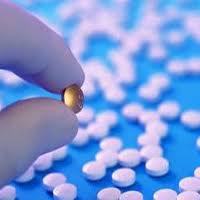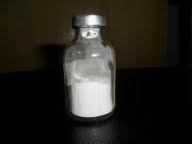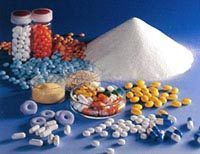Doxycycline Hyclate
25.00 - 50.00 INR
Product Details:
- Medicine Type Veterinary Raw Materials
- Physical Form Tablets
- Ingredients Chemicals
- Recommended For Pets Cattle
- Storage Instructions Room Temperature
- Click to View more
X
Doxycycline Hyclate Price And Quantity
- 25 Kilograms
- 25.00 - 50.00 INR
Doxycycline Hyclate Product Specifications
- Tablets
- Veterinary Raw Materials
- Pets Cattle
- Room Temperature
- Chemicals
Doxycycline Hyclate Trade Information
- Cash in Advance (CID) Cash Advance (CA)
- 1000 Kilograms Per Day
- 7 Days
- No
- Middle East Africa Central America Eastern Europe South America Western Europe Asia North America Australia
- ISO 9000:2015 and DUNS certified.
Product Description
Doxycycline Hyclate is a tetracycline antibiotic. It is the medication used for the treatment of a wide variety of bacterial infections as well as to prevent malaria. This antibiotic drug works by inhibiting the growth of bacteria. It is not effective in viral infections. The medication must be taken orally on an empty stomach or as prescribed by the physician. One must avoid the over-dosage of the medicine as that will lead to its decreased effectiveness. Some mild side-effects like stomach upset, diarrhea, nausea, or vomiting may occur.
Properties:
- Formula: C22H24N2O8.HCl
- Molecular Weight: 480.90
- Deleted CAS: 62149-53-5
- Synonyms: Vibramycin (TN);Doxycycline hyclate (USP);(2Z,4S,4aR,5S,5aR,6R,12aS)-2-(amino-hydroxy-methylidene)-4-dimethylamino
- -5,10,11,12a-tetrahydroxy-6-methyl-4a,5,5a,6-tetrahydro-4H-tetracene-1,3,12-trione; ethanol; hydrate; dihydrochloride;
- Doxycycline hydrochloride hemiethanolate hemihydrate;DOXY;Doryx (TN);Doryx;Doxycycline Hcl;Dipivefrin HCl;
- Boiling Point: 685.2 °C at 760 mmHg
- Flash Point: 368.2 °C
- Appearance: yellow powder
The antibiotic doxycycline belongs to the tetracycline class and is used to treat infections caused by bacteria as well as certain parasites. Among the diseases it treats are pneumonia, acne, chlamydia, typhus, syphilis. Lyme disease, and cholera. Combining it with quinine also prevents malaria.
Technical Specifications
- Molecular Formula - C24H33ClN2O10
- Synonyms - Doxycycline hyclate Periostat 24390-14-5 C22H24N2O8.HCl.0.5H2O.0.5C2H6O CHEMBL1200567
- Molecular Weight - 545.0
How does it work:
Doxycycline is a member of the tetracycline antibiotic class. It prevents bacteria from growing and spreading. As a result of its anti-bacterial properties, it is able to kill acne-causing bacteria and decrease an oily substance that triggers acne.
Applications Or where it is used:
Doxycycline is used in treating bacterial infections, such as certain skin and eye infections; pneumonia and other respiratory infections; infections of the lymphatic, digestive, genital, and urinary systems; and certain other infections spread by ticks, lice, and mites.
How to use:
The medication can be taken orally 1 to 2 times daily, preferably on an empty stomach, at least 1 hour before or 2 hours after a meal. It is best to take this medication with a full glass of water unless instructed otherwise.
Dosage of usage:
- Oral doxycycline is usually administered as 200 mg on day one (100 mg every 12 hours), followed by 100 mg daily on subsequent days.
- A maintenance dose of 50 mg can be administered as a single dose or every 12 hours. It is recommended to use 100 mg every 12 hours in the case of more severe infections (especially chronic infections of the urinary tract).
Warnings and precautions while using this product
Teeth discoloration (yellow-gray-brown) can be caused by drugs of the tetracycline class used during tooth development (last half of pregnancy, infancy, and childhood until age 8). While this adverse reaction is more common when drugs are used for a long period of time, it has been observed after short-term use as well. There have also been reports of enamel hypoplasia. Pediatric patients aged 8 years and under should be treated with this medication only when there are no other options available for severe or life-threatening conditions.
Tell us about your requirement

Price:
Quantity
Select Unit
- 50
- 100
- 200
- 250
- 500
- 1000+
Additional detail
+91
Email










 : nilesh.sheth70
: nilesh.sheth70
